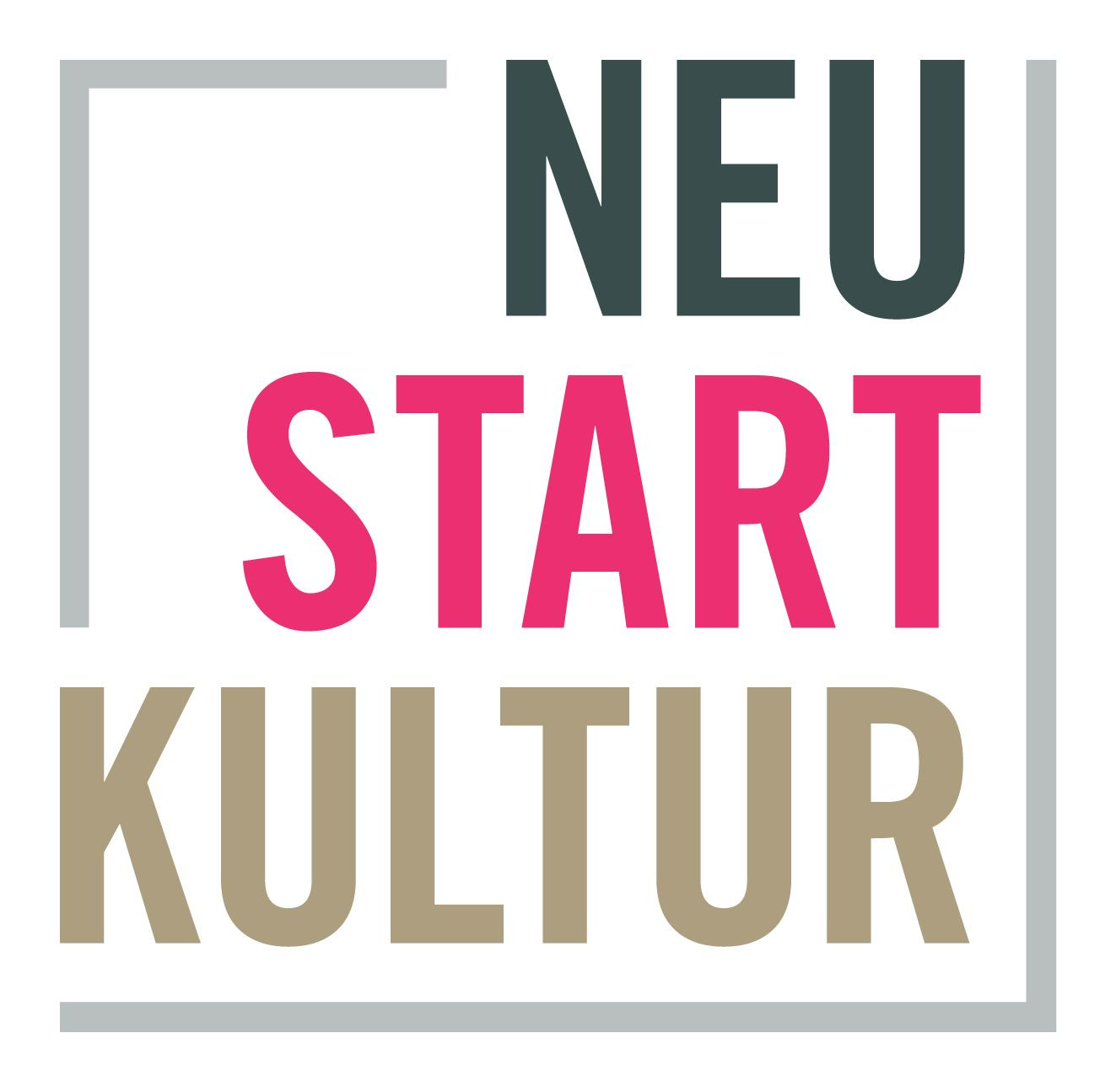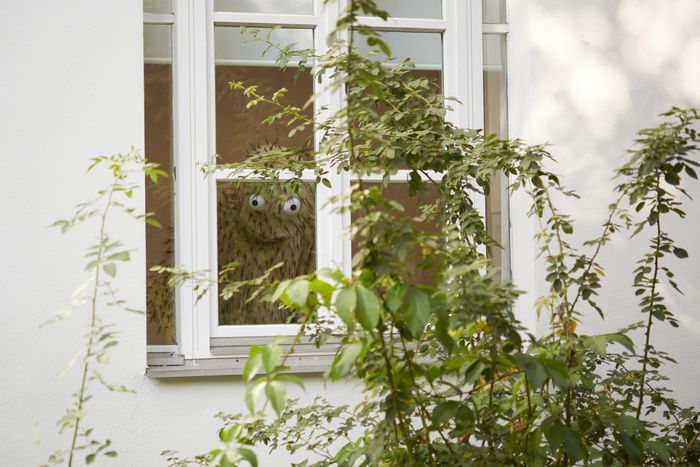
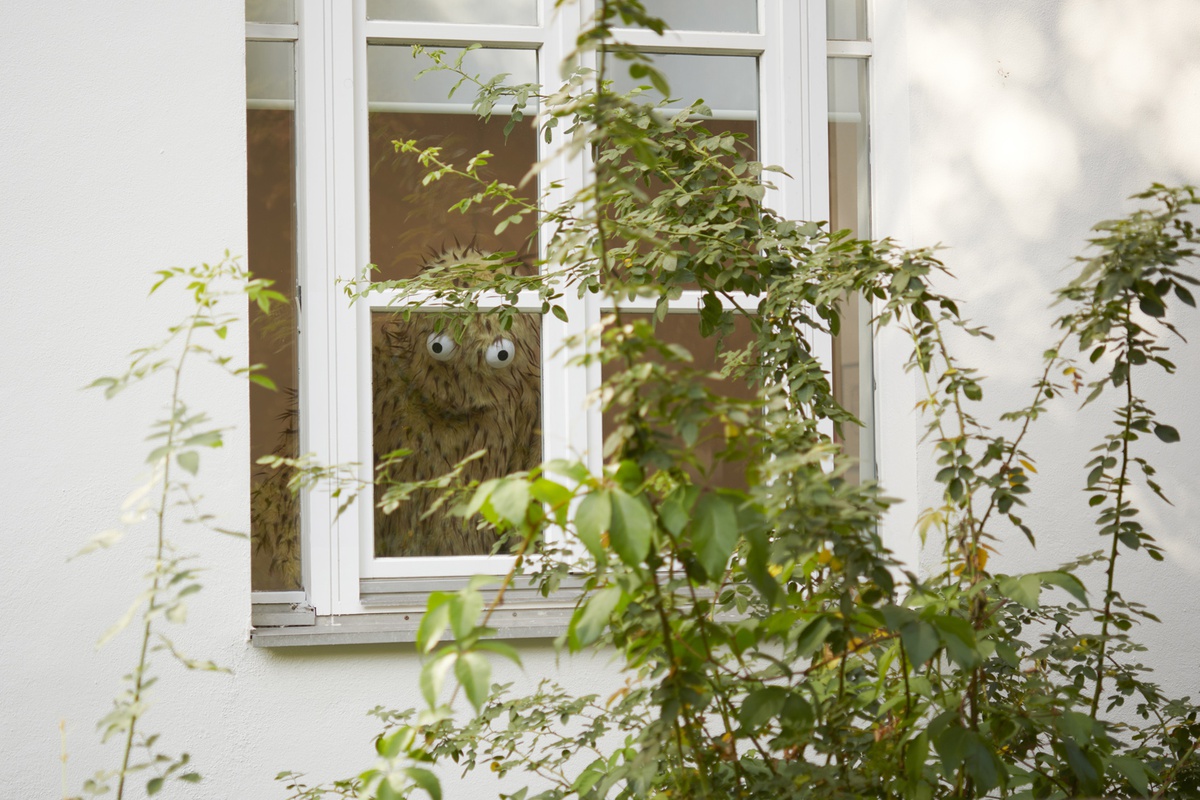
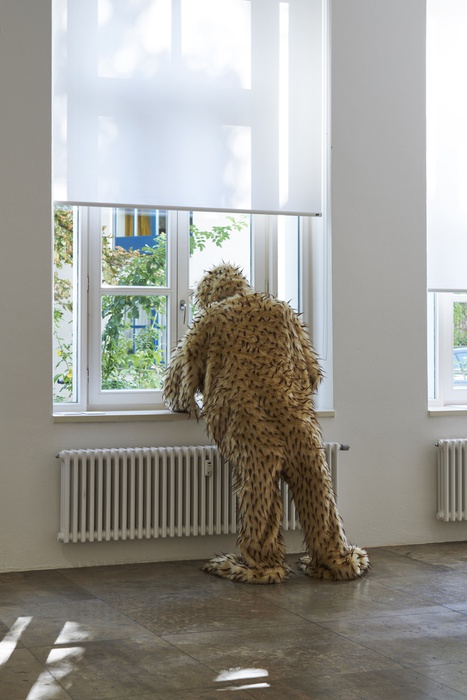
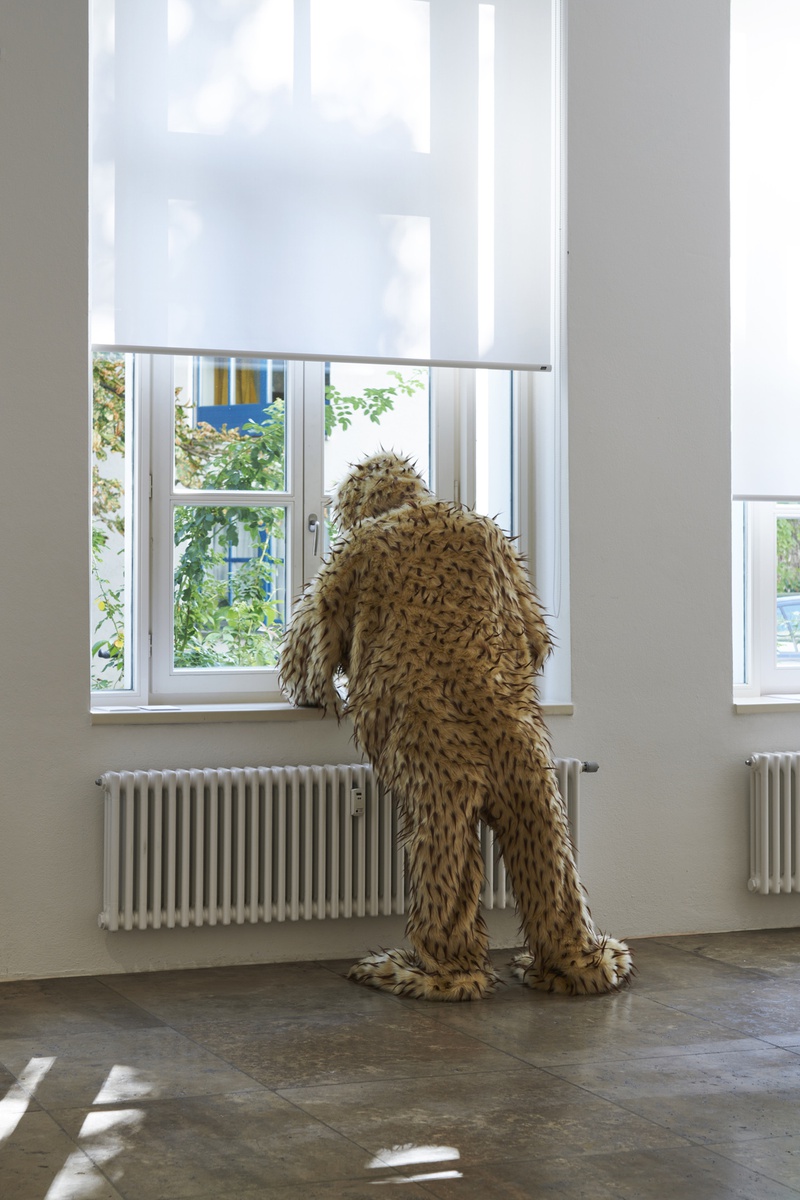
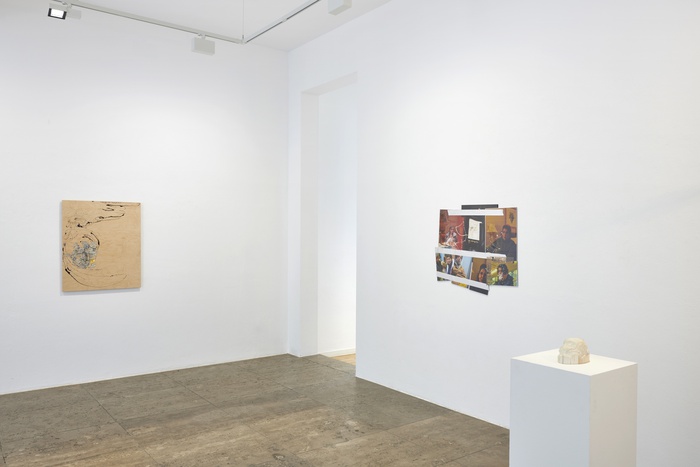
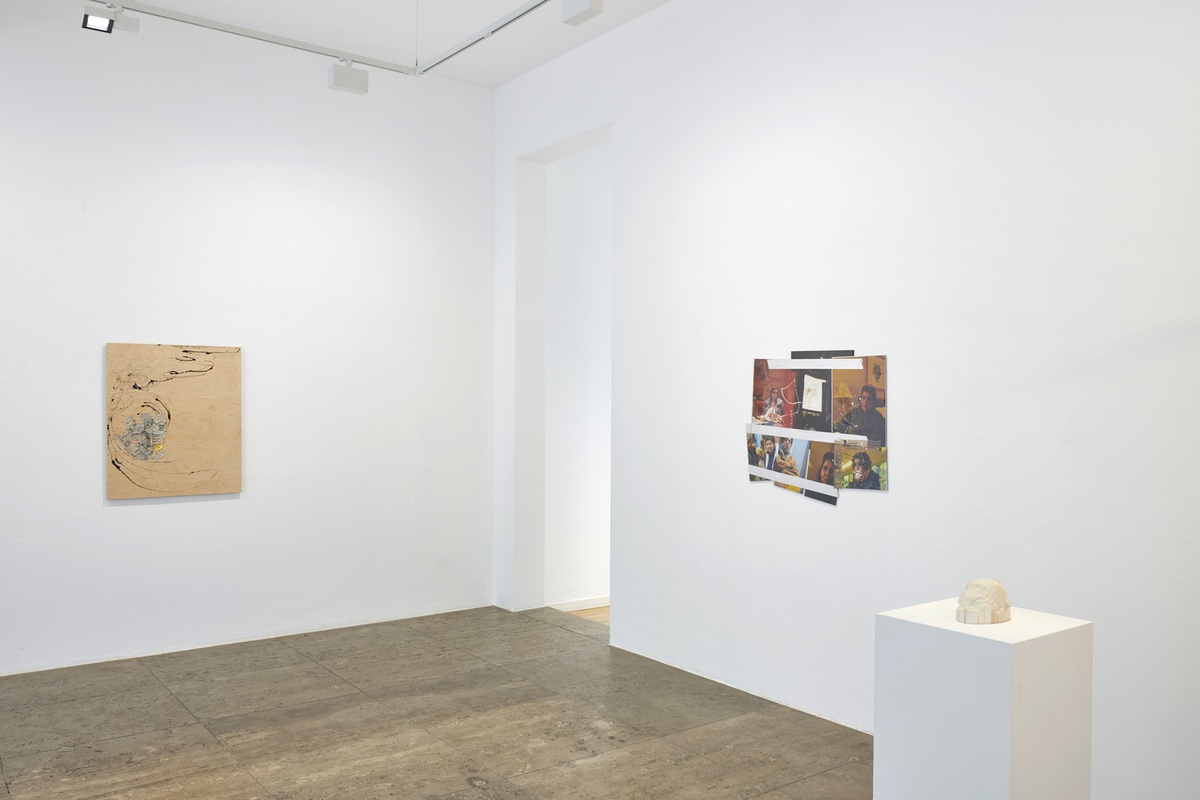
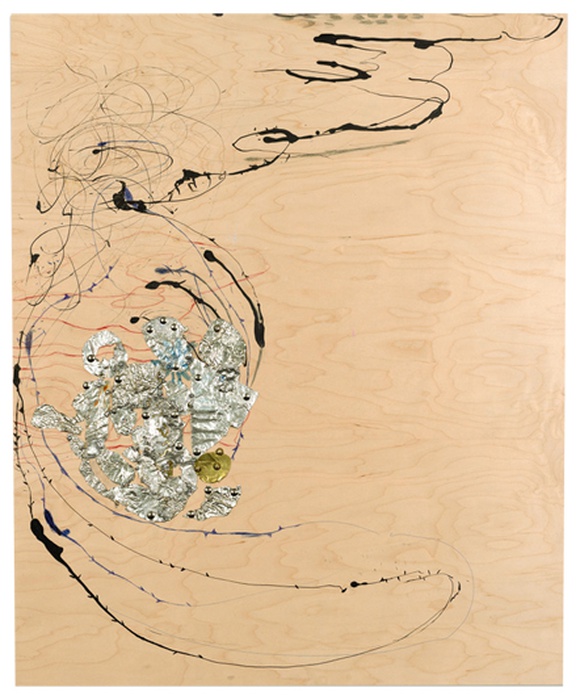
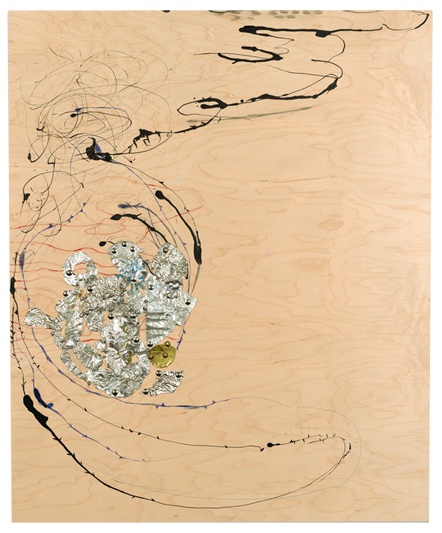
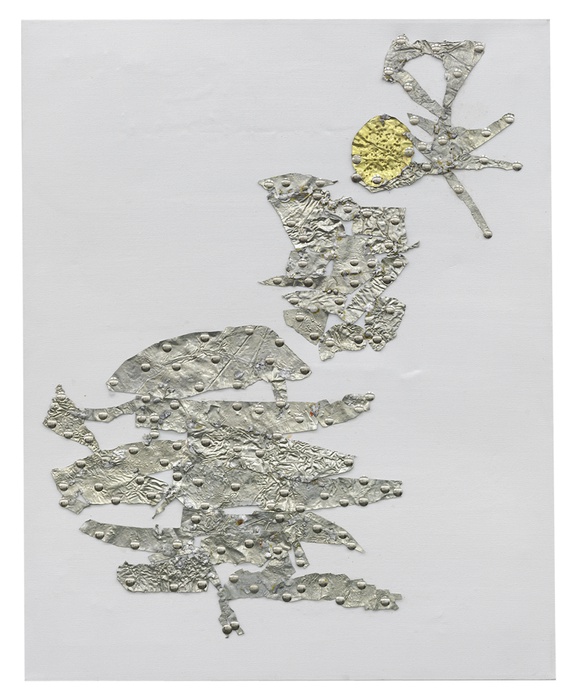
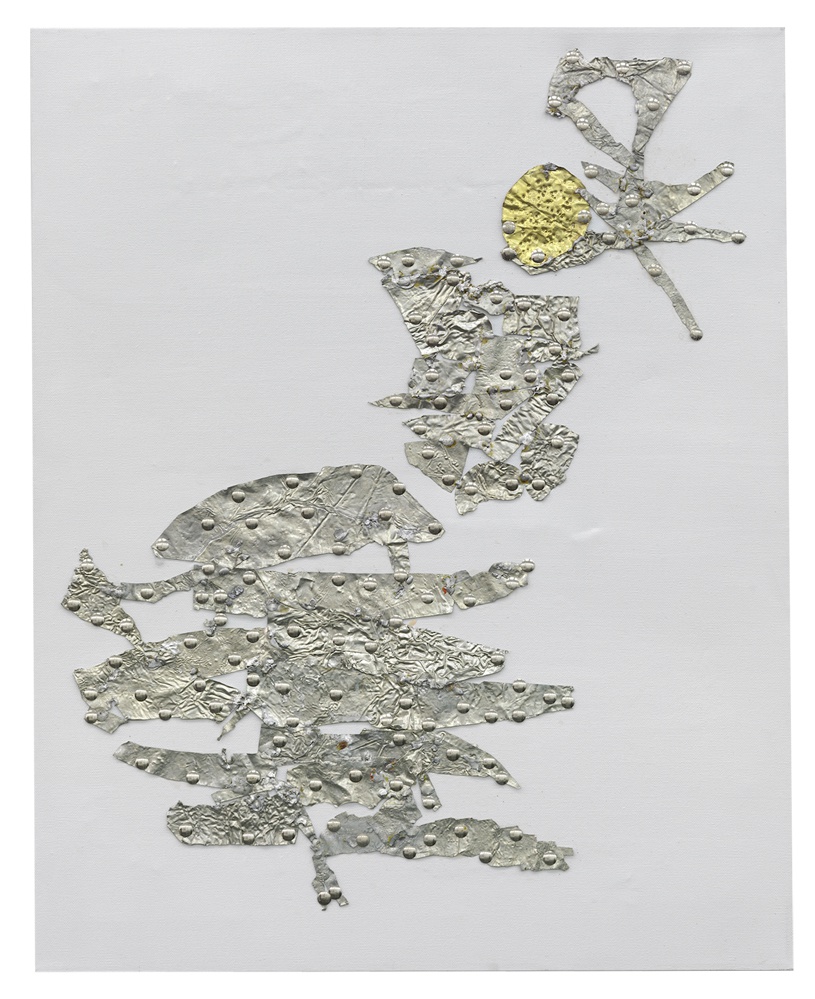
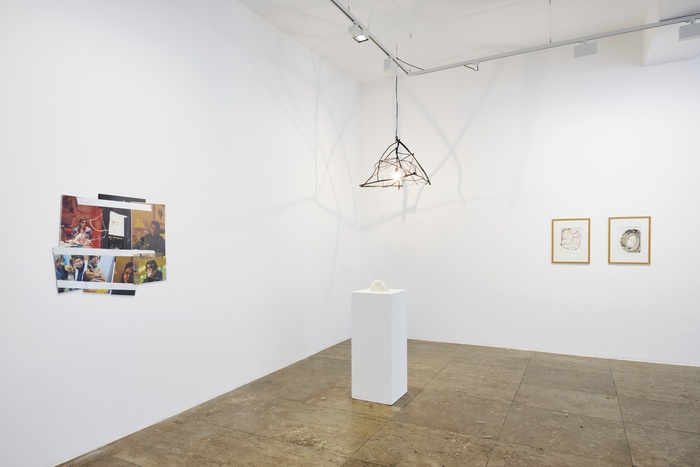
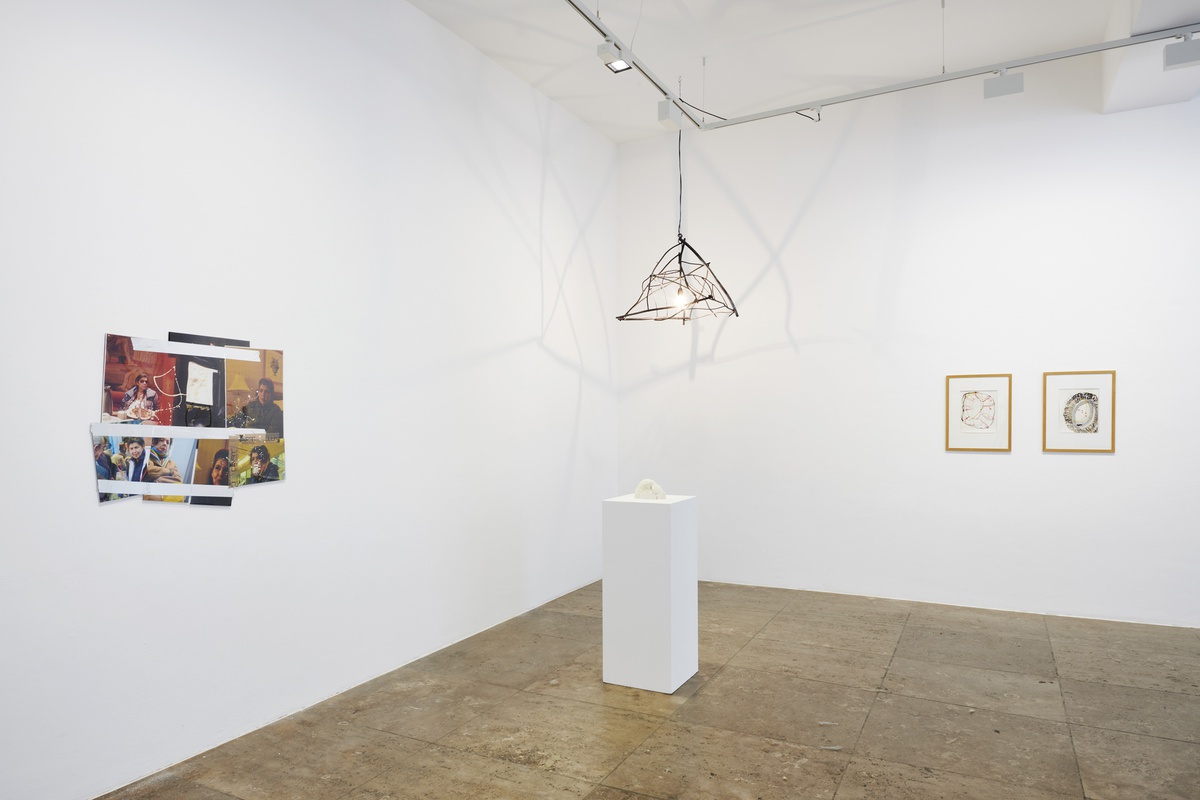
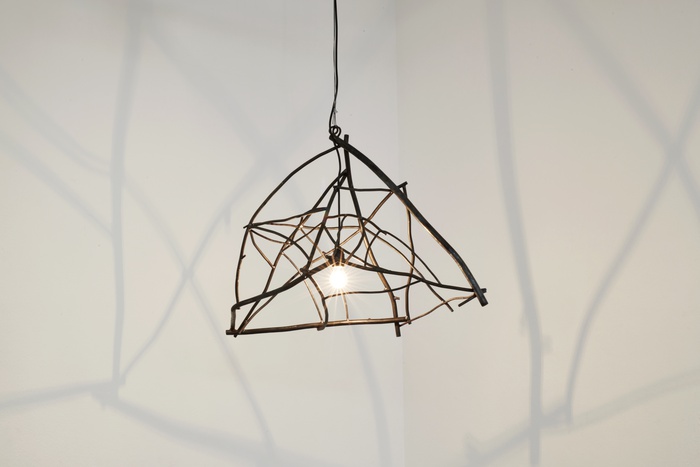
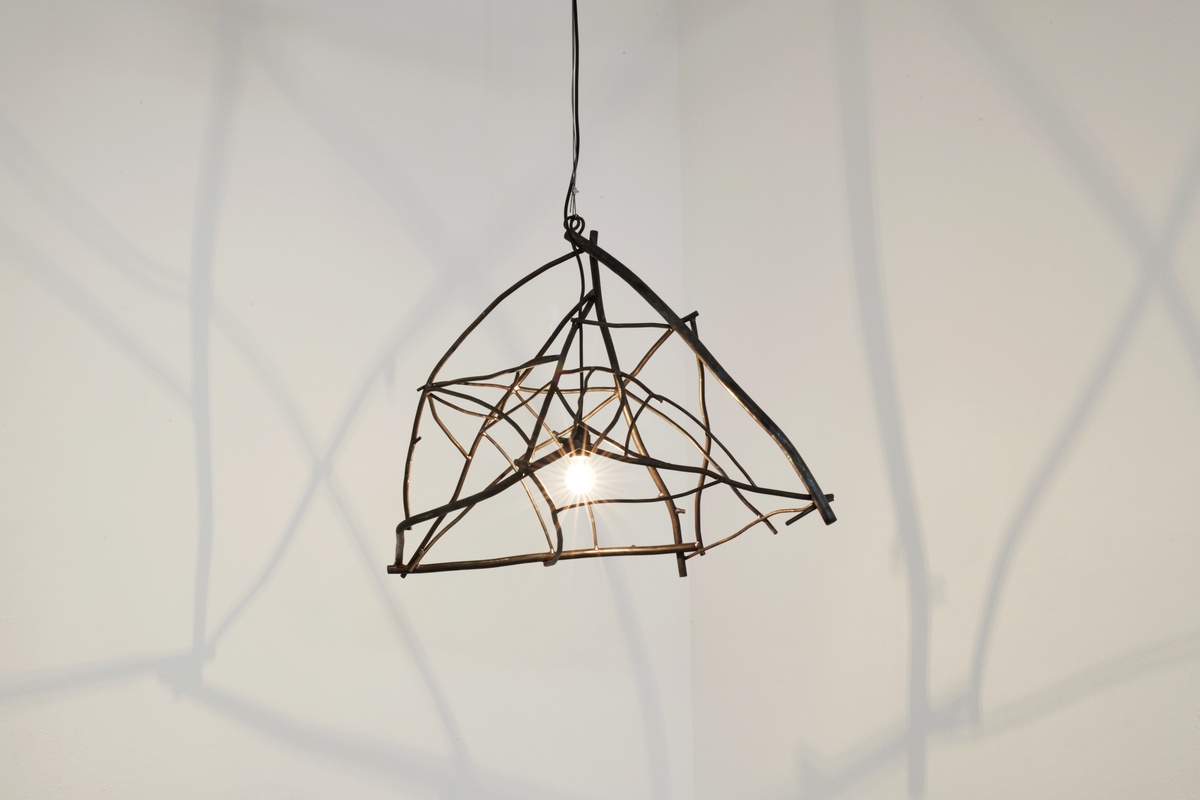
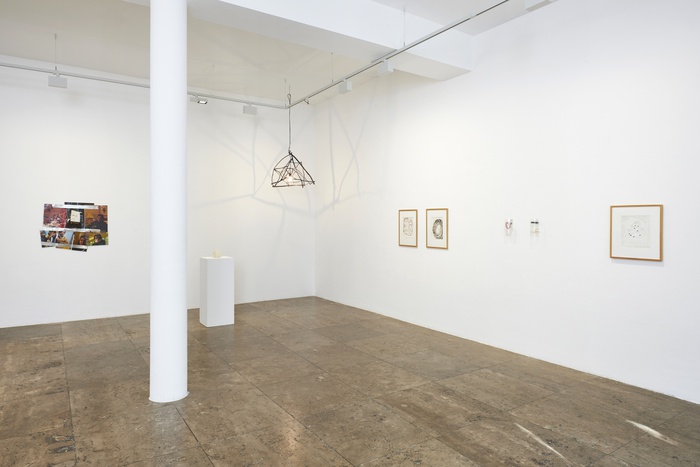
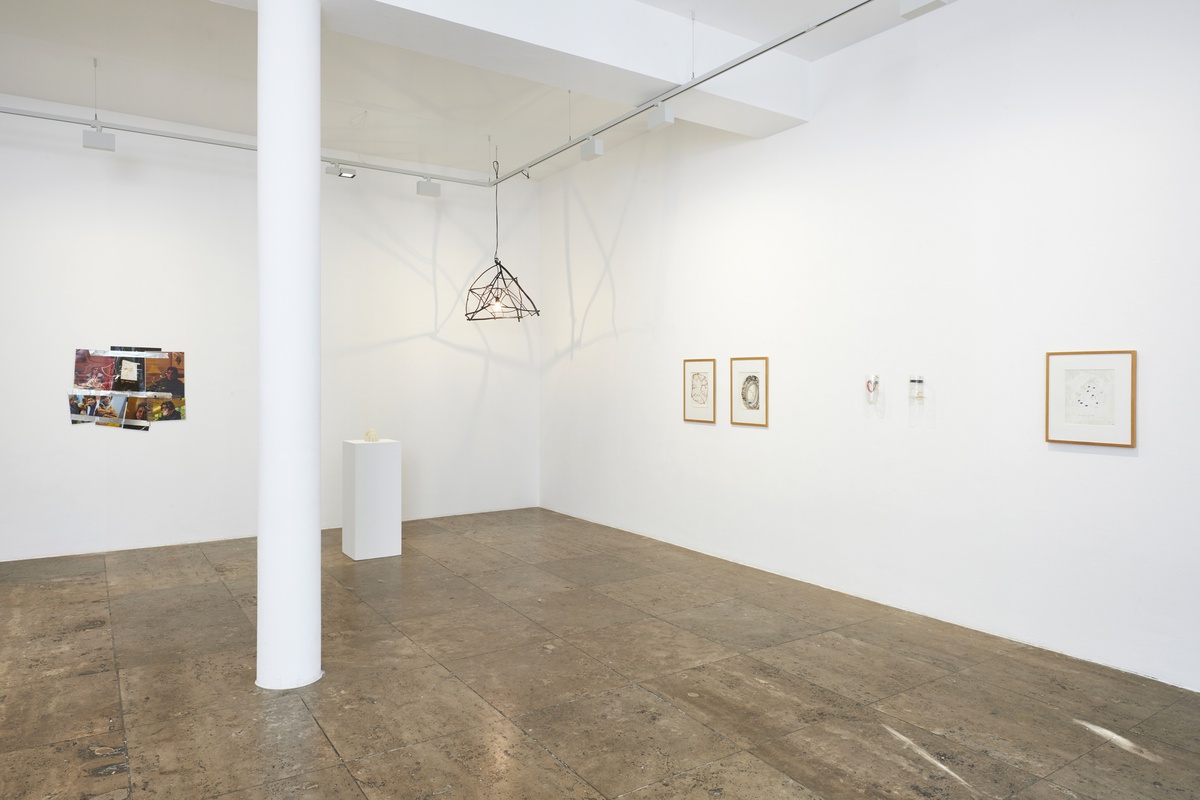
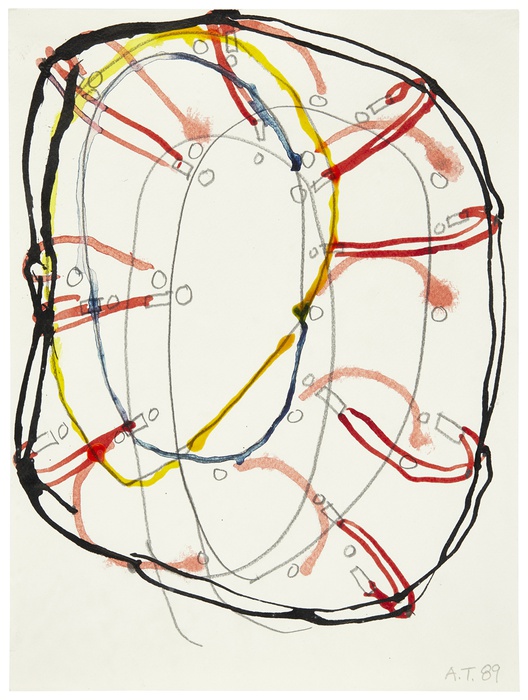
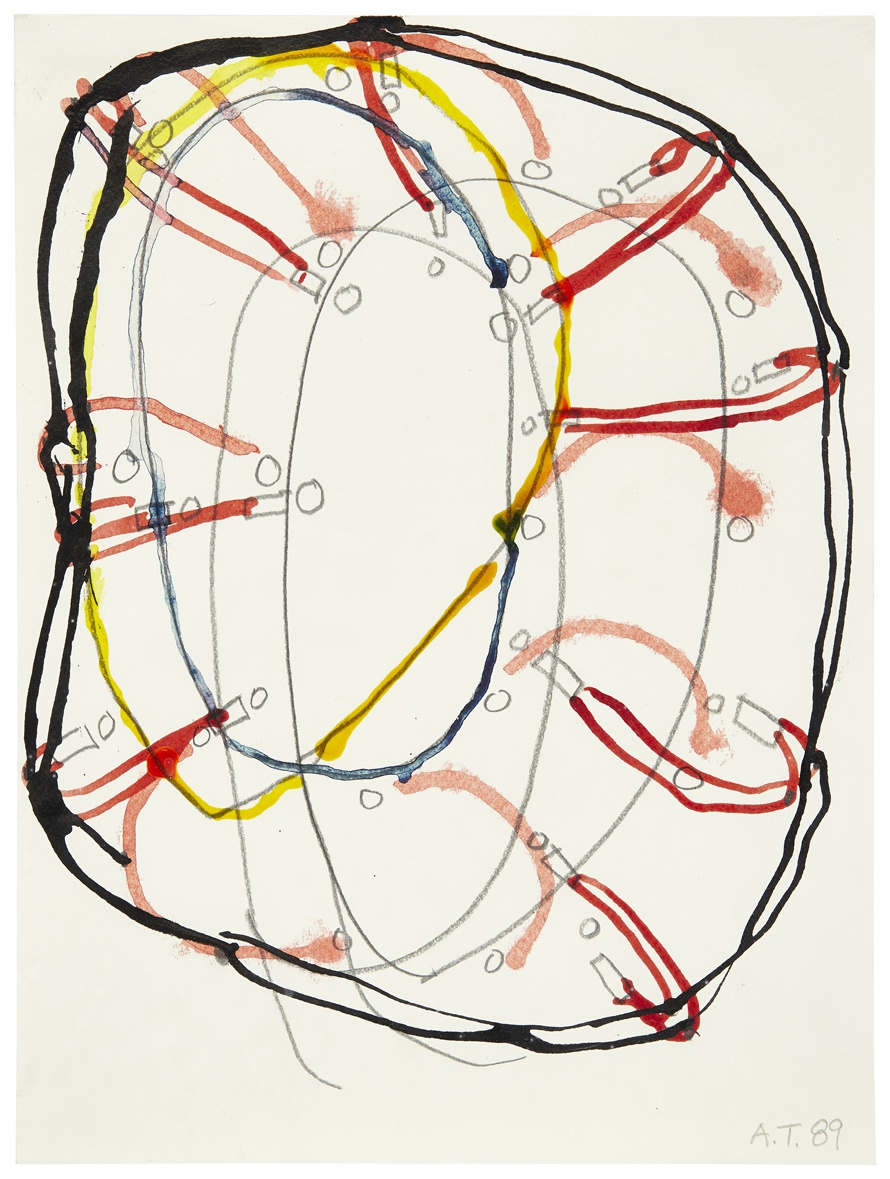
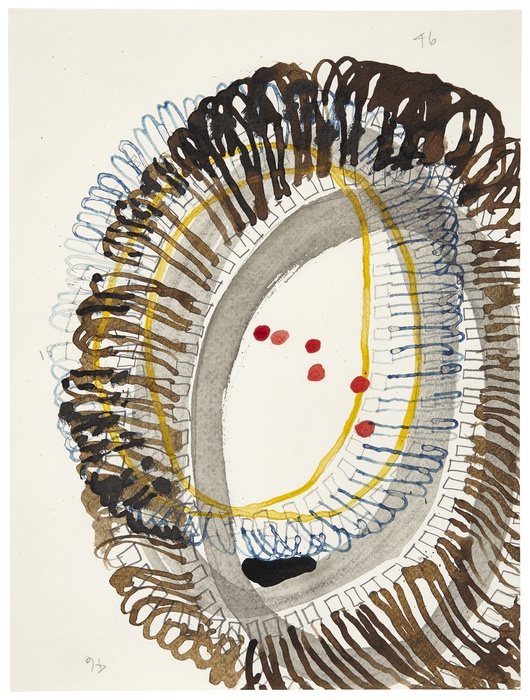
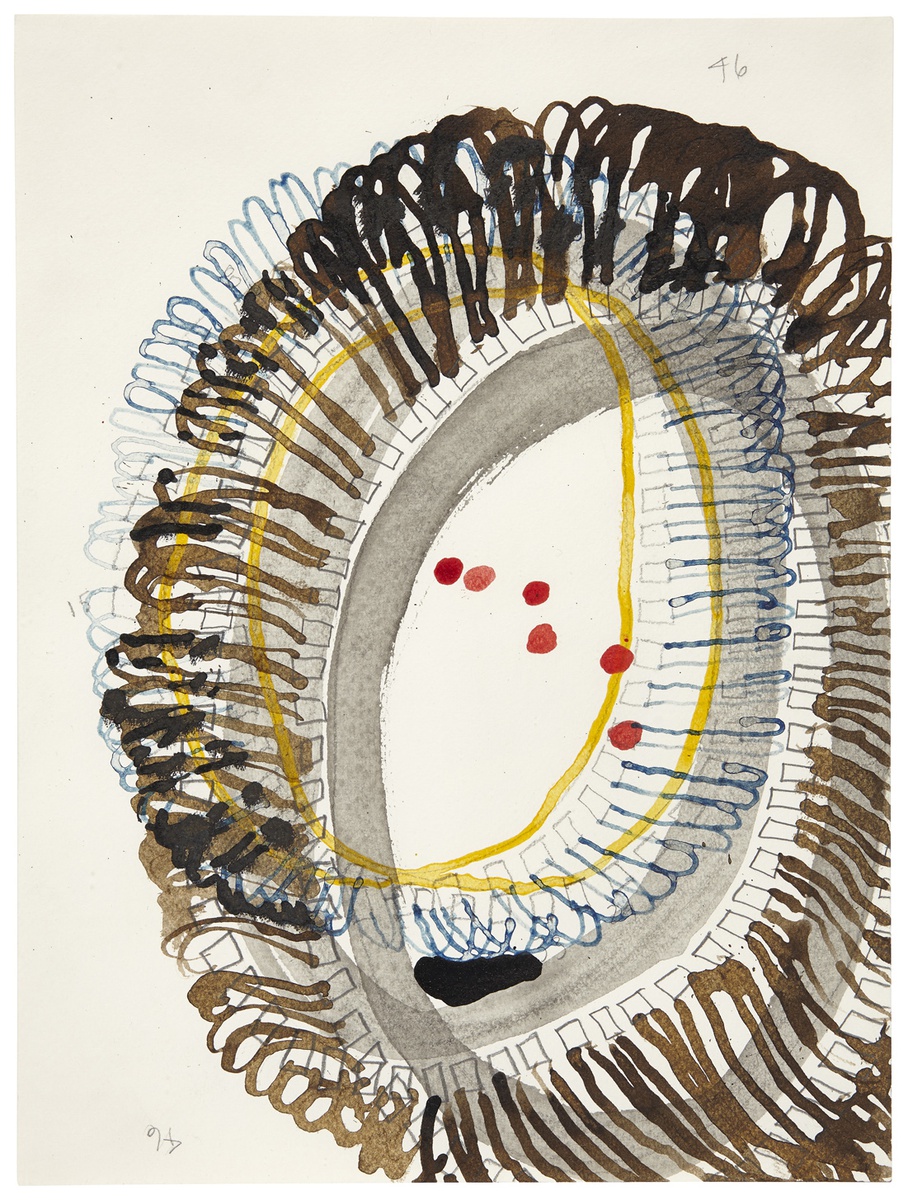
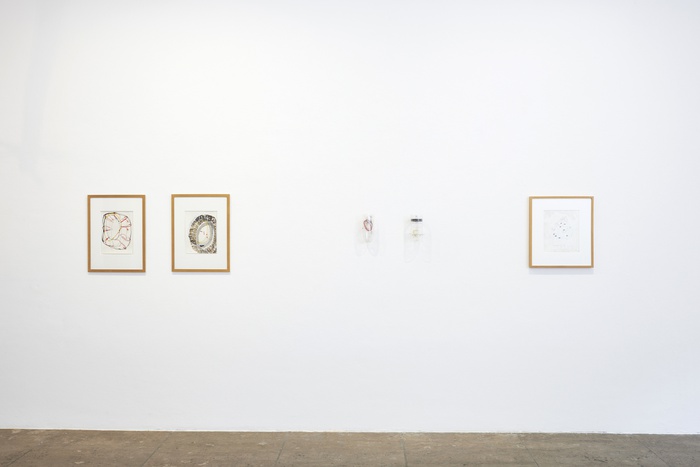
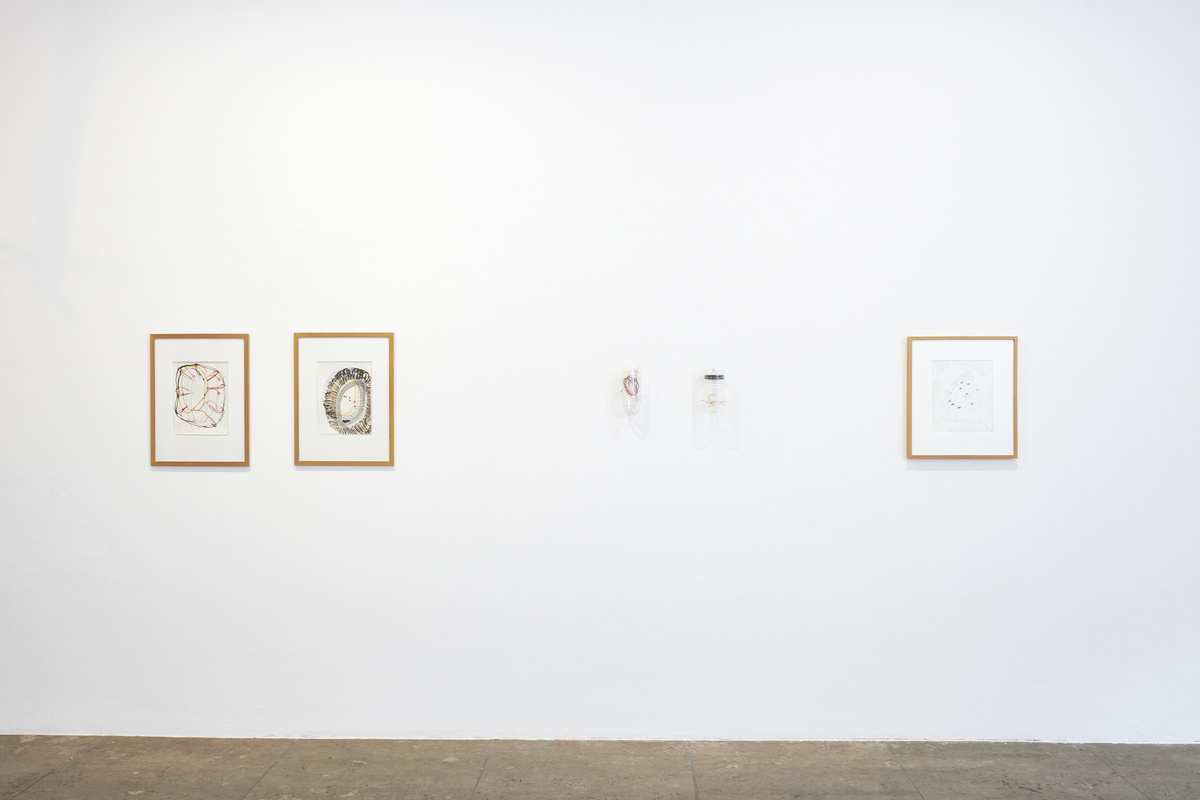
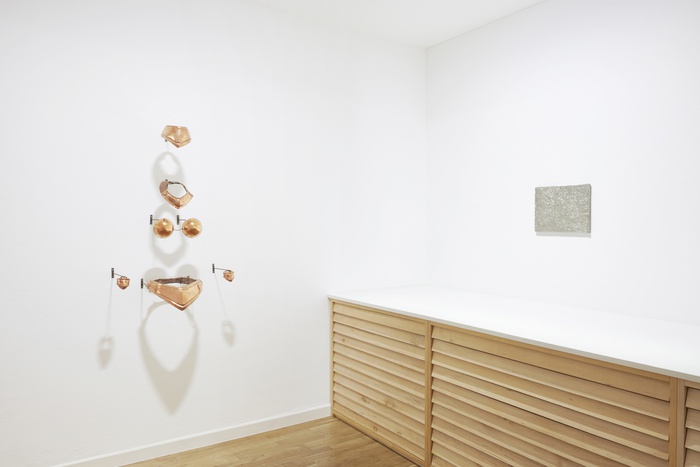
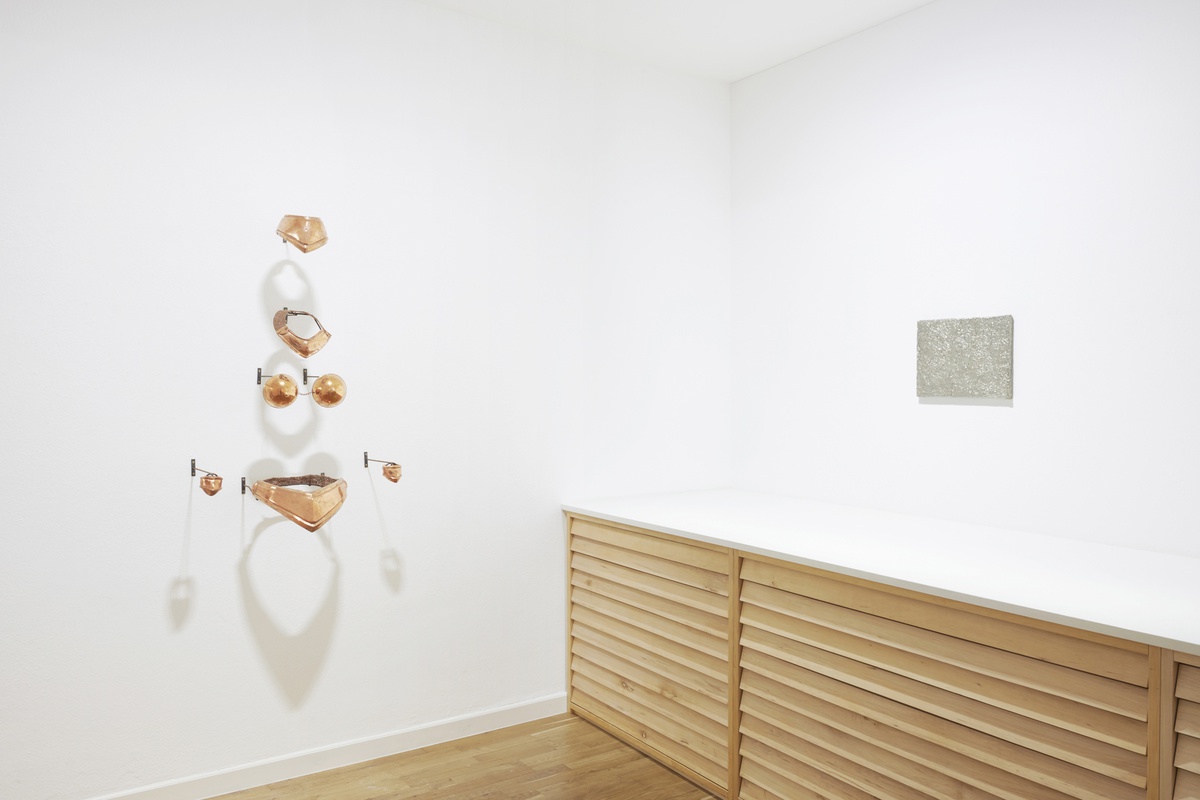
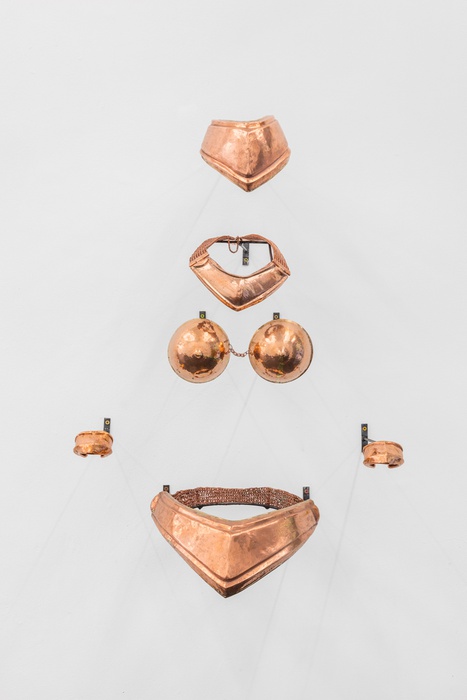
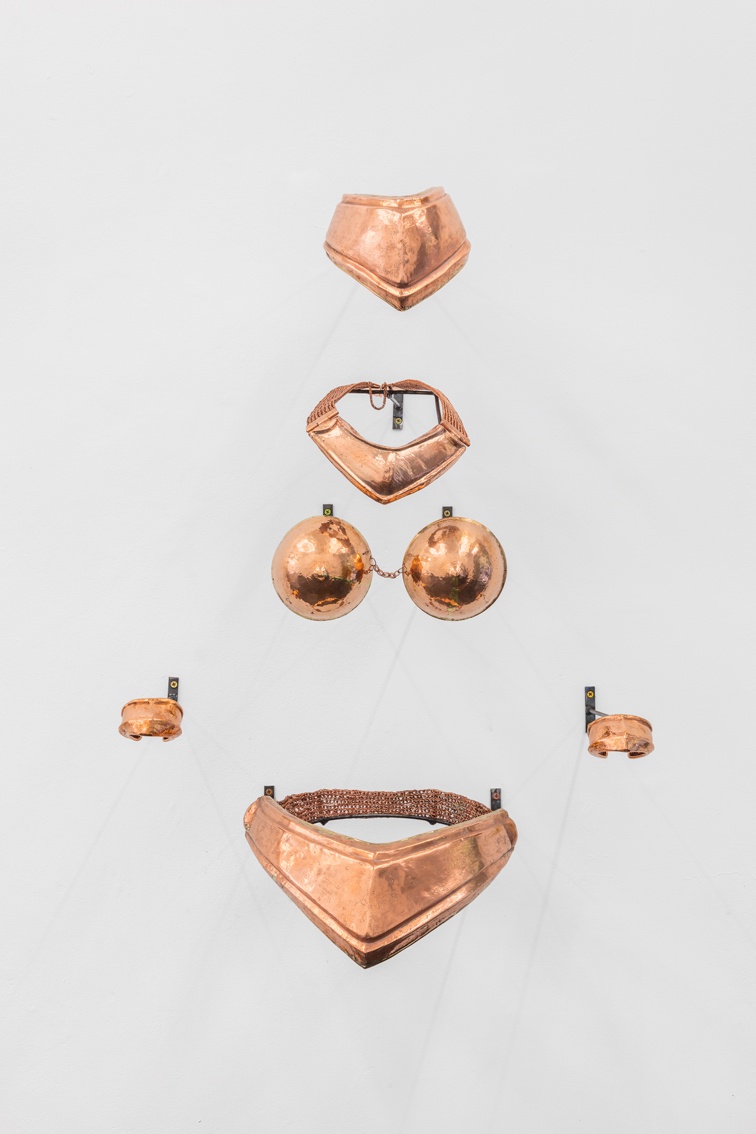
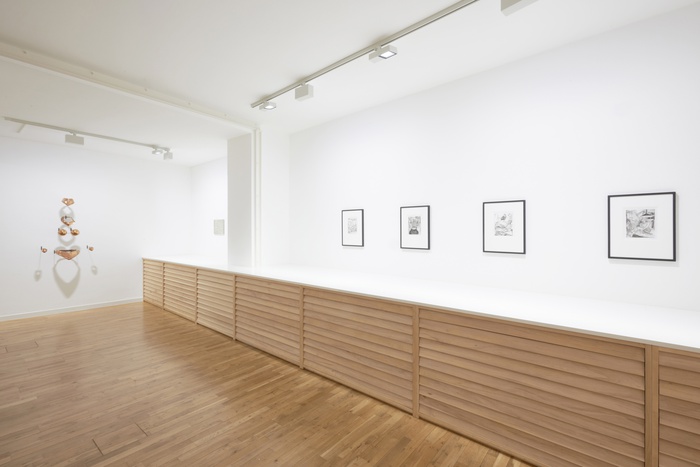
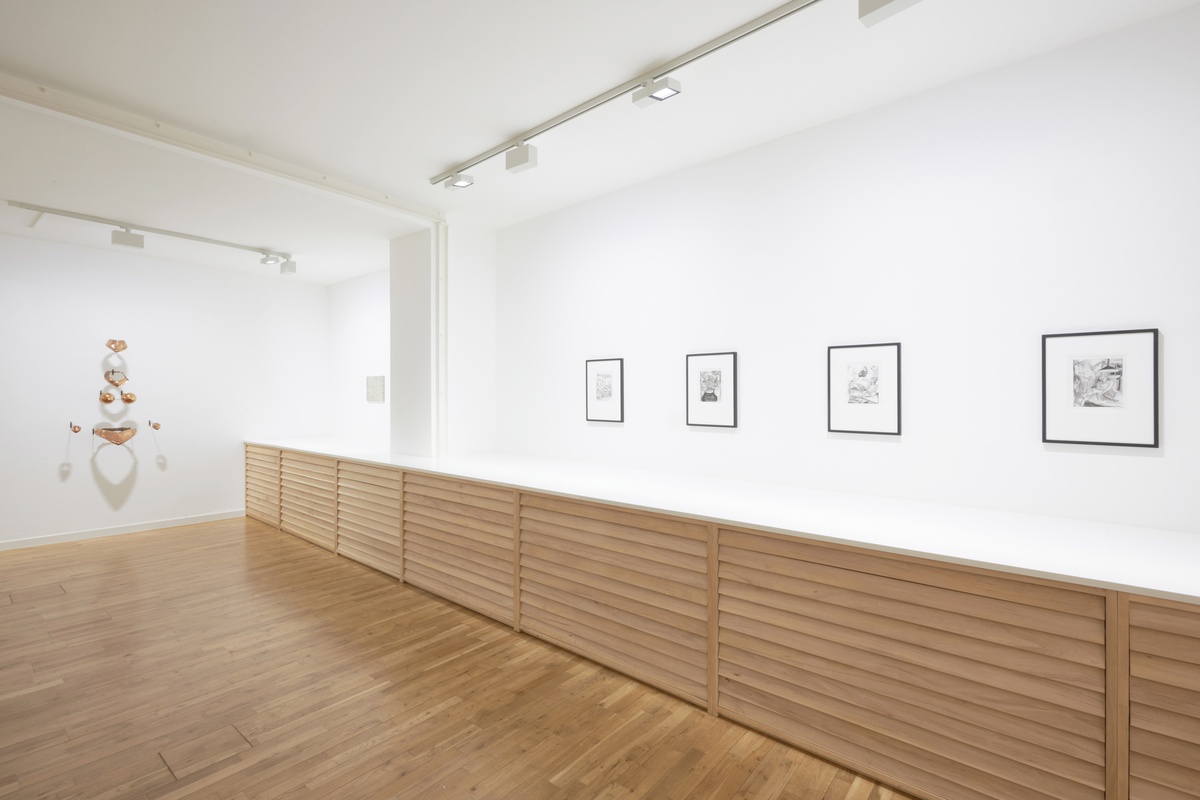
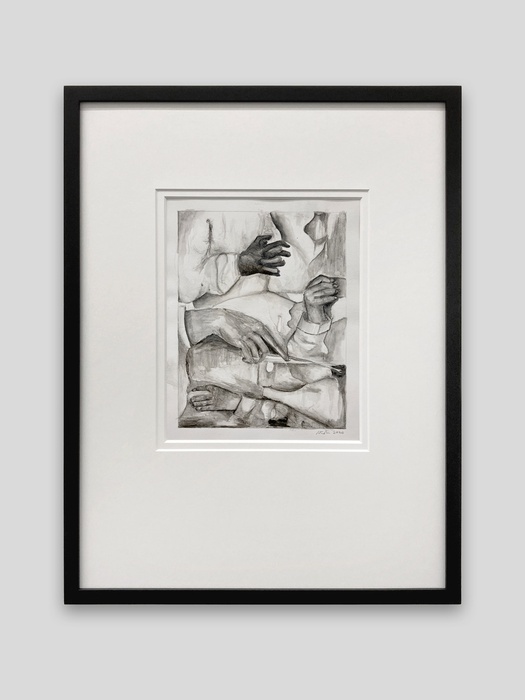
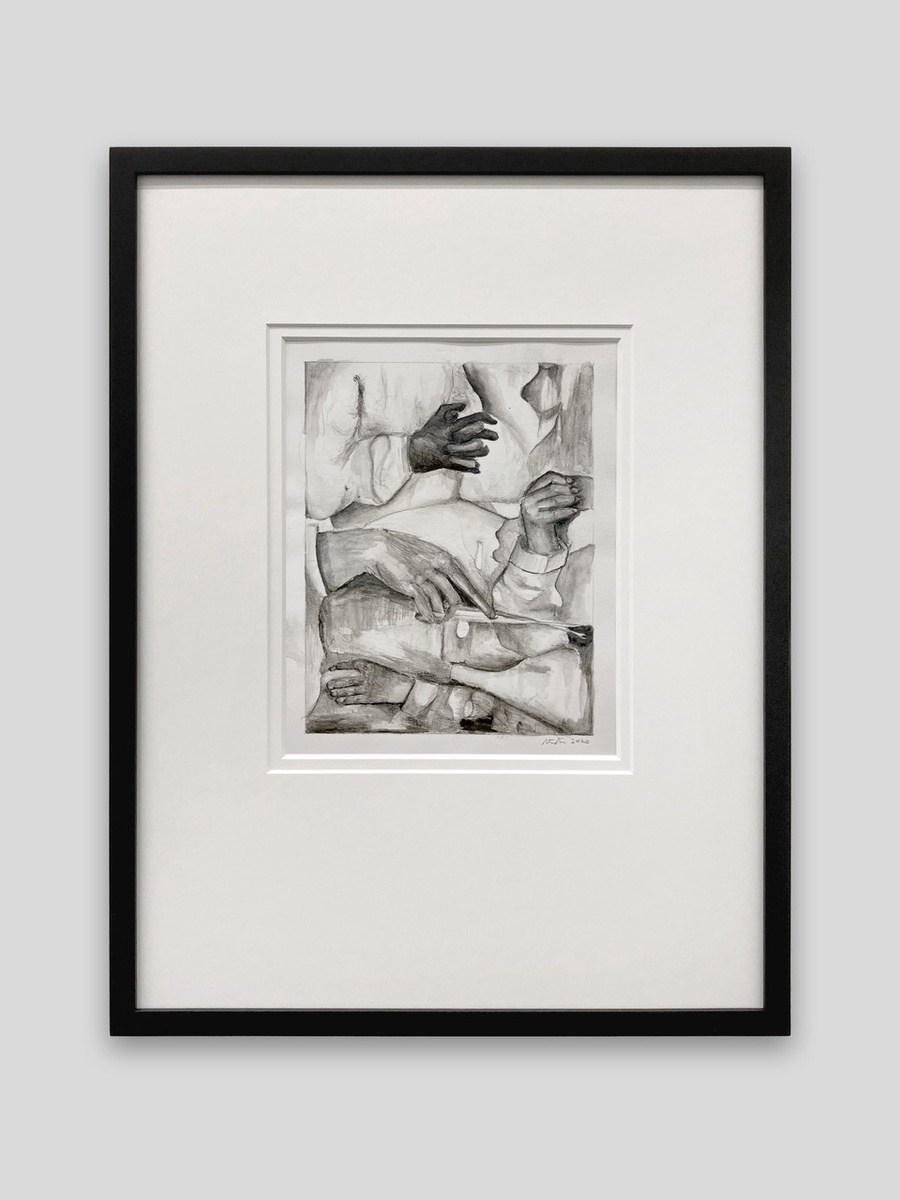
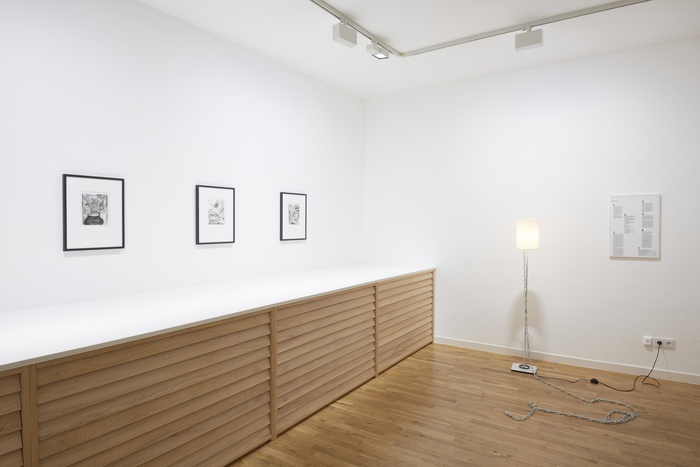
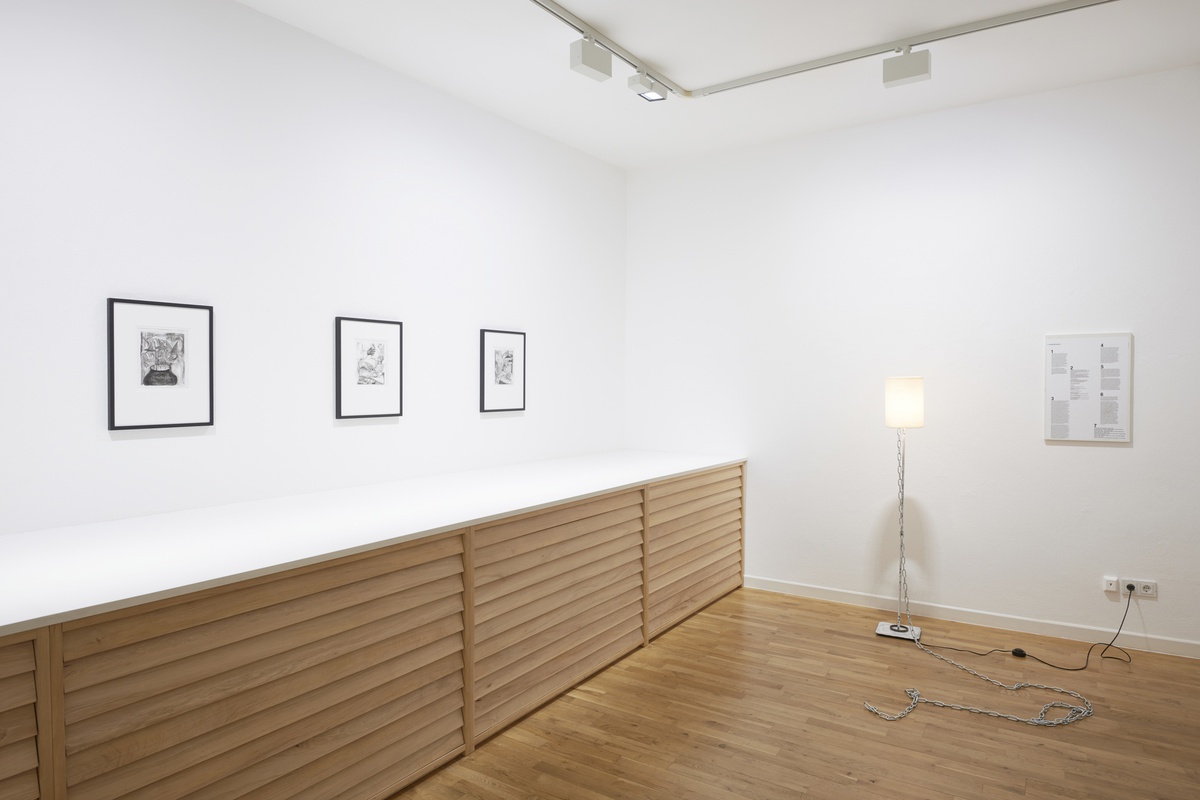
Exhibition view, Jahn und Jahn, Munich, 2021
hand sewn faux fur, embroidered fabric eyes, wood, metal
190 x 120 x 90 cm
Exhibition view, Jahn und Jahn, Munich, 2021
ink, pencil, ballpoint pen, marker, brass, tin and nails on wood
94 x 78,7 cm
pencil, brass, tin and nails on canvas (gesso)
76,1 x 60,9 cm
Exhibition view, Jahn und Jahn, Munich, 2021
metal, welded
60 x 99 x 66 cm
Exhibition view, Jahn und Jahn, Munich, 2021
pencil, ink and watercolor on paper
30,5 x 23 cm
pencil, ink and watercolor on paper
30,5 x 23 cm
Exhibition view, Jahn und Jahn, Munich, 2021
Exhibition view, Jahn und Jahn, Munich, 2021
copper (hammered), copper chains
82 x 55,5 x 38 cm
Exhibition view, Jahn und Jahn, Munich, 2021
water soluble pencil on paper
21,5 x 16,5 cm
Exhibition view, Jahn und Jahn, Munich, 2021
In their work, all five artists express an attitude of opposition against established aesthetics, artistic genres, and judgments of taste. Employing unique forms of poetry and humor, they deliberately challenge canonical norms with an antithetical practice that tends toward the unfinished, the provisional, and the open-ended. Their work also moves beyond common boundaries of genre in its combination of visual art with literature or music.
The title “Odd Vows” refers to a drawing made by Taylor in 1988 and epitomizes his approach to oppositional ideas: “to show and to name; to shape and to say; to reproduce and to articulate; to imitate and to signify; to look and to read” (Foucault). This sensibility for ambivalence can be found in the work of all artists represented in the exhibition.
Isa Genzken (b. 1948 in Bad Oldesloe) is one of the most important and influential artists of the last 40 years. Her innovative, multifaceted, complex, and uncompromising work was shown in a retrospective at the Museum of Modern Art in New York in 2013, the artist’s first large solo show in the United States. This exhibition was also shown at the Museum of Contemporary Art Chicago and the Dallas Museum of Art. This comprehensive exhibition included assemblage, sculpture, painting, photography, collage, drawing, artist’s books, and film, as well as expansive installations, which not only highlighted Genzken’s wholly free utilization of multiple techniques and mediums but also the radical shifts that she repeatedly executed in her long, uninterrupted career. Her artistic power is unique and explores the fundamental themes of modernity and urban architecture. In the 1980s Genzken produced concrete sculptures. In a nod to Brutalism, they are reminiscent of architectural models that were exhibited by Fred Jahn in the 1980s. Commuting between New York City and Cologne, she worked during this time more radically than anyone else on redefining what sculpture could mean. Thus, as an inevitable consequence within a discourse of fundamental questions, Genzken created complex narrative installations from the late 1990s onwards, in which she brought together materials from the consumer-oriented world of goods, transforming them into impressive, film-set-like scenarios.
The Mexican artist Ana Pellicer (b. 1946 in Mexico City) studied art at the Art Students League and the New School for Social Research in New York. She currently lives and works in Santa Clara del Cobre, Michoacán. Following the Arts and Crafts Movement led by William Morris, and the teachings of the Mexican artist Adolfo Best Maugard, Pellicer has long dealt intensively with traditional coppersmith techniques. Previously on view at Galerie Francesca Pia were Pellicer’s jewellery designs for the Statue of Liberty, which she made in the mid-1980s to commemorate the anniversary of the French gift to the United States. In the exhibition “Odd Vows” one of her imaginary costumes for Nahui Ollin can be seen; an homage to the poet, painter, and activist, who even now is considered one of the most controversial and enigmatic women within Mexican art history.
Josef Strau (b. 1957 in Vienna) has been dealing with various concepts of text production and their relationship to artistic work for more than thirty years. His practice is as much based on the written word as it is shaped by repeatedly changing roles. As “an artist who writes and a writer who makes art,” Strau combines the diary-like with the theoretical and fictional in his texts, questioning the concepts of authorship and subjectivity. His works in the exhibition “Odd Vows” revolve around the motif of the angel as a “guardian above the bed of a child and possibly the first image that they see, their first image and maybe even their first glimpse of an external idea, of another world.” The works consist of metal sheets that Strau rolled, beat, soldered, sewed, mounted on wooden panels and canvas, and combined with drawings and paintings until they became seraphic icons – like images from a Byzantine fresco.
The American artist Al Taylor (b. 1948 in Springfield, Missouri) studied at the Kansas City Art Institute from 1966 to 1970. Directly after graduating with a Bachelor of Fine Arts in painting and printmaking, he moved to New York, where he lived and worked until his premature death in 1999. A long and intensive collaboration with Galerie Fred Jahn began in 1991 and signified a turning point in his career, as the artist himself noted. Taylor’s first museum exhibition took place in the Kunsthalle Bern in 1992. His constructions, made of everyday materials and things from a plastic and throwaway culture, appear playfully light, sometimes fragile; yet at the same time exude a remarkable presence. Hoses, tin cans, clothes hangers, hula-hoops etc., tightly wound with wire, mounted on walls and ceilings, develop a kaleidoscopic interplay of line and space, light and dark, near and far. Taylor understood his objects as “drawings in space” and his drawings as pieces dealing with the same theme using different means – hence constantly exploring the possibilities of the visual. In this way, Taylor’s work can be thought of as the multifaceted production and investigation of the spaces between (linguistic, written) signs and objects of immediate perception. In the exhibition “Odd Vows,” drawings and objects reflect Taylor's artistic dexterity, humor, and draughtsmanship.
Stefan Tscherepnin (b. 1977 in Boston) works as a composer, musician, and visual artist. Going beyond cultural hierarchies, his artistic practice and music production often start from collaborations. Tscherepnin deals with the fantasies and realities of childhood dreams in an adult world. He is particularly interested in the abstraction of motifs that stem from a collective memory of youth, such as the famous Cookie Monster from the TV series “Sesame Street.” As alter egos and avatars, Tscherepnin introduces these figures into the complex, spatial environments of his exhibitions, full of satirical and absurd stories.

